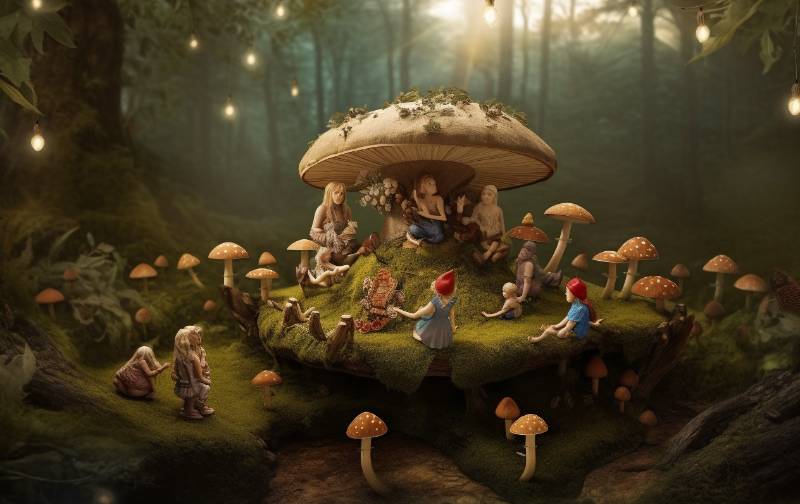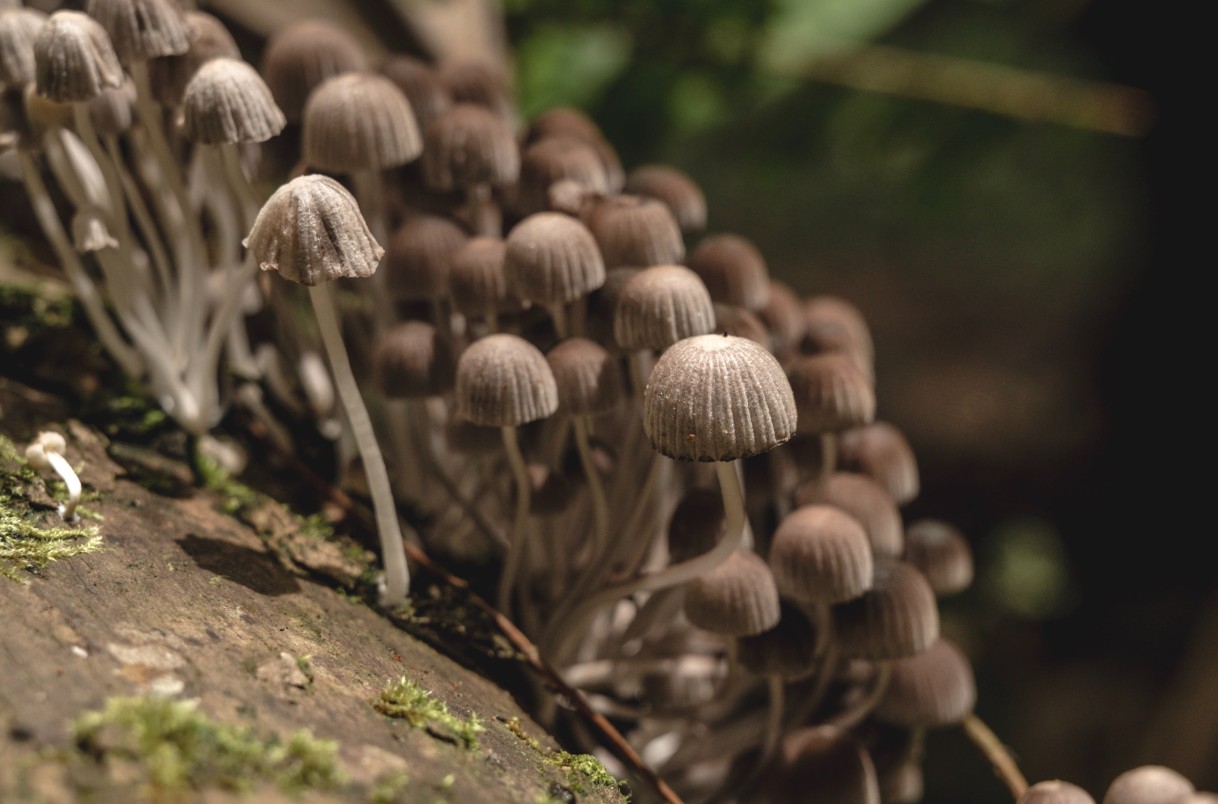The Weird and Wonderful: Bizarre Mushroom Species from Around the Globe
Mushrooms are more than just a topping for your pizza or a side dish at dinner. In fact, the fungal kingdom is incredibly diverse, boasting a multitude of weird and wonderful species that captivate scientists and nature enthusiasts alike. From the eerie glow-in-the-dark mushrooms of dense forests to the flamboyant and oddly shaped fungi found in tropical rainforests, the world of mushrooms is a treasure trove of peculiarities waiting to be explored. That word carries with it significant responsibilities that must be preserved in the right way, which implies the right ecological measures to protect the environment and all these creatures. To contribute to these noble movements start from your home, and commit to furniture that is quality and eco-friendly wood and that will last a long time without the need for constant renovations that contribute to the creation of additional waste, which is why you can consider some of the excellent custom closets in Tampa, FL. In the meantime, let’s embark on a journey to uncover some of the most bizarre mushroom species from around the globe.
Glow-in-the-Dark Fungi: Nature’s Neon Lights
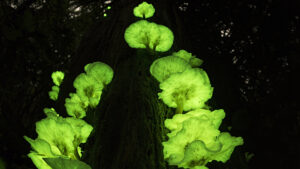
In the depths of dark forests, where sunlight struggles to penetrate the thick canopy, an enchanting spectacle unfolds. Here, amidst the decaying foliage and damp earth, glow-in-the-dark fungi cast an otherworldly glow, transforming the forest floor into a mystical realm. One such species is Mycena chlorophos, commonly known as the “green-gilled mushroom.” Emitting a ghostly green luminescence, these mushrooms are thought to use bioluminescence as a means of attracting insects to aid in spore dispersal. Those who devote themselves more deeply to biology as well as to the specific processes of chemistry and even physics can consider this extraordinary natural phenomenon in some special ways and through the lenses of all-explanatory science, however, for those for whom this is not their strong point, they can simply admire this phenomenon or turn to an excellent science tutor in Boulder that will help them master their material and pass all the tests.
Another mesmerizing example is the Omphalotus nidiformis, also known as the ghost fungus. Found predominantly in Australia and parts of Asia, this ethereal fungus emits a soft, eerie glow that illuminates the surrounding foliage. While the exact purpose of this bioluminescence remains a subject of scientific inquiry, one theory suggests that it may serve as a warning signal to potential predators, indicating the presence of toxins within the mushroom. In order to encounter these interesting phenomena in reality, you need to really embark on a demanding adventure and only with a good guide, and you can organize such an event if you diagnose and upgrade your car at a transmission service in Buffalo so that you can travel comfortably and safely, and head to the area full of nature and its interesting and precious phenomena.
The phenomenon of bioluminescent mushrooms extends beyond the forest floor and into the depths of underground caves. In the subterranean darkness, fungi such as Panellus stipticus thrive, casting a faint blue glow that illuminates the cavern walls. This adaptation to low-light environments underscores the remarkable versatility of fungi and their ability to thrive in diverse habitats. As long as the space is dark and moist enough, they will successfully develop creating a quality space for themselves to thrive. This kind of phenomenon is something that you could really explore more deeply because you will find a lot of interesting things about it, in addition, an internet provider that manages IT services in San Antonio provides its users with excellent internet with which they can quickly and easily explore all of this and expand their knowledge.
Fungi with Unusual Shapes and Sizes: Nature’s Sculptors
While some mushrooms dazzle with their luminous glow, others captivate with their bizarre shapes and sizes. Take, for example, the aptly named Clathrus archeri, commonly known as the “devil’s fingers.” Resembling something out of a horror film, this mushroom emerges from its egg-like structure with long, slender arms adorned with a foul-smelling, sticky substance. The sight of these grotesque appendages protruding from the ground is enough to send shivers down the spine of even the most seasoned mushroom hunter. Found in distant Tasmania and Australia, it serves at one time as a special type of attraction for tourists who decide to visit those countries, and in order to gain valuable and desirable tourist knowledge in time that will be useful when you go on trips to some of these foreign countries, you can devote yourself to excellent hospitality courses.
In tropical rainforests, amidst the dense foliage and humidity, a myriad of peculiar fungi thrive. Among them is the Dictyophora indusiata, also known as the “veiled lady mushroom.” This elegant fungus boasts a slender stem topped with a delicate, lacy skirt-like structure known as the indusium. The purpose of this ornate appendage is to aid in spore dispersal, as it catches the wind and carries the mushroom’s reproductive cells far and wide. Useful systems such as this one that such primitive beings have broken down have always been a kind of inspiration used by scientists to develop new technologies and systems that have gone hand in hand with the development of telecommunications and the demand for millimeter wave products.
But perhaps one of the most bizarre and enigmatic mushroom species is the Geastrum saccatum, commonly known as the “earthstar.” Resembling a miniature satellite dish, this peculiar fungus begins its life as a spherical puffball before gradually unfurling its outer layer to reveal a star-shaped structure beneath. This unique adaptation allows the Earthstar to disperse its spores more effectively, ensuring the survival of future generations in the ever-changing landscape of the forest floor. Looking somewhat like an eye inside a sun star, this grotesque and large mushroom is certainly something you would not want to see on a cheese board with other interesting dishes during the celebration.
Parasitic Fungi: Nature’s Intruders
In the intricate web of the forest ecosystem, some fungi play the role of parasites, exploiting other organisms for their own gain. One such species is the Ophiocordyceps unilateralis, also known as the “zombie ant fungus.” This insidious parasite infects ants, hijacking their nervous systems and compelling them to climb to the tops of trees before ultimately succumbing to the fungal infection. From the ant’s lifeless body, a spore-producing stalk emerges, ready to release its deadly cargo onto unsuspecting victims below. The phenomenon of this terrible parasite has experienced high popularity in recent years due to the great promotion of post-apocalyptic movies that implied invasions caused by the evolution of these types of mushrooms, and if your business also needs good promotion that will make it famous, you can contact an excellent Colorado Springs SEO company that will create a successful promotion plan for you.
Another example of fungal parasitism is the Cordyceps sinensis, also known as the “caterpillar fungus.” Native to the Tibetan Plateau, this parasitic fungus infects caterpillars, eventually mummifying their bodies before sending forth a fruiting body to release its spores. Considered a prized medicinal fungus in traditional Chinese medicine, the caterpillar fungus fetches high prices in international markets, despite concerns about overharvesting and habitat destruction. Scientists have been researching the medical possibilities of this mushroom for a long time, as well as its application in therapies and treatments, and along the way they are dealing with some demanding and noble tasks, such as finding the best treatment for autism so that children diagnosed with this condition receive the best and adequate therapy.
From the eerie glow of bioluminescent mushrooms to the grotesque appendages of devil’s fingers, the world of fungi is a testament to the boundless creativity of nature. With each new discovery, scientists peel back another layer of the fungal kingdom’s mysteries, revealing a tapestry of life that is as strange as it is beautiful. As we continue to explore and unravel the secrets of these bizarre mushroom species, one thing remains certain: the fungal kingdom will continue to surprise and astonish us with its weird and wonderful creations. What you can definitely do while immersing yourself in this intriguing world of unique creatures like mushrooms is to visit some of the biggest European science festivals where you will be able to meet the whole spectrum of these unique creatures and other interesting organisms at the biological stands, and in order to travel economically and safely through Europe, you can rent a car in Beograd.
The Alien-Like Fungi of the Amazon Rainforest
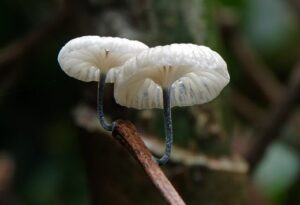
Deep within the lush expanse of the Amazon rainforest, an array of otherworldly fungi lurk, their bizarre forms resembling something out of a science fiction movie. One such species is the “Octopus Stinkhorn” (Clathrus archeri), aptly named for its tentacle-like arms that protrude from a gelatinous egg sac. As it matures, the arms unfurl, revealing a foul-smelling, spore-covered interior, attracting flies and other insects crucial for its reproduction. Another peculiar Amazonian inhabitant is the “Devil’s Cigar” (Chorioactis geaster), a rare mushroom with a dark brown, cigar-shaped fruiting body that splits open to reveal a star-shaped interior. Found only in select locations in Texas and Japan, this enigmatic fungus continues to puzzle scientists with its cryptic lifecycle.
Venturing into the depths of the Amazon, one may also encounter the “Veiled Lady” (Phallus indusiatus), a delicate mushroom adorned with a lacy skirt-like veil. This elegant fungus emits a pungent aroma reminiscent of rotting flesh to attract flies for spore dispersal, playing an essential role in the rainforest’s ecosystem. With their otherworldly appearance and ecological significance, these alien-like fungi remind us of the incredible diversity hidden within Earth’s most biodiverse regions. They also spark creativity and inspire many creators to take a step further in their designs, and a lot of extravagant luxury dress designs have come from the look of these types, such an elegant design will surely attract you to buy it for your special event that you can complete by renting a limousine from a limo service in Atlanta.
Underwater Marvels: The Strange Mushrooms of the Deep Sea
While mushrooms are typically associated with terrestrial environments, the depths of the ocean harbor their own peculiar fungal inhabitants. Known as “deep sea mushrooms,” these enigmatic organisms thrive in the darkness of the ocean floor, where they play a vital role in recycling organic matter and supporting deep-sea ecosystems. One such species is the “Black Smoker Mushroom” (Pleurocrypta porphyra), found near hydrothermal vents on the ocean floor. With its dark, velvety cap and elongated stalk, this mushroom forms dense colonies around the vents, where it metabolizes sulfur compounds released by volcanic activity.
In addition to hydrothermal vents, deep-sea mushrooms can also be found in association with sunken shipwrecks and decaying organic matter. The “Ghost Fungus” (Rhizophydium fragile), for example, thrives on submerged wood and debris, its translucent fruiting bodies glowing softly in the darkness of the abyss. Despite the challenges of life in the deep sea, these strange mushrooms have adapted to thrive in this extreme environment, showcasing the resilience and adaptability of life on Earth. Protected in their habitat to which they have successfully adapted, they continue to develop successfully contributing to the ecosystem, and in order for you to be protected in your home and work in peace on the development of your ideas and personality, you can install excellent security access control systems from Philadelphia as you would contribute to additional protection in your home.
The Fantastical Fungi of Fairy Rings
In forests and grasslands around the world, mysterious circles of mushrooms known as “fairy rings” dot the landscape, captivating observers with their whimsical appearance and folklore. These rings are formed by the outward growth of mycelium, the underground network of fungal hyphae, which deplete nutrients in the center, creating a ring of lush grass or foliage. Within these rings, a diverse array of mushroom species flourish, each contributing to the ring’s expansion and ecological function. This dramatic and interesting phenomenon has been a frequent inspiration for the legends and stories of many people, and dedicated members of the organization for youth Readathon school fundraiser read a lot about these and other fascinating stories while successfully working on developing their good reading habits.
Among the most fantastical inhabitants of fairy rings is the “Pixie’s Parasol” (Mycena interrupta), a small, brightly colored mushroom with a distinctive blue-green cap. This charming fungus often grows in clusters within fairy rings, adding a splash of color to the forest floor. Another common resident is the “Fairy Bonnet” (Coprinellus disseminatus), a delicate mushroom with a bell-shaped cap that releases spores in a cloud of black ink when disturbed. These whimsical fungi have inspired legends and folklore throughout history, enchanting generations with their magical appearance and mysterious origins. Some of the particularly interesting stories involve magic and legends and can really be an interesting and inspiring story to raise the atmosphere and commitment of the listeners, and if you want the atmosphere at your celebration to always be at a high level, you can hire an emcee.
Urban Explorers: Mushrooms in Unlikely Places
In the concrete jungles of cities around the world, a surprising variety of mushrooms have adapted to thrive in urban environments, transforming abandoned buildings, sidewalks, and parks into miniature ecosystems. One such species is the “City Oyster Mushroom” (Pleurotus ostreatus), which colonizes decaying wood and organic matter in urban landscapes, providing a valuable service by decomposing waste materials and improving soil health. Another common urban dweller is the “Sidewalk Shaggy Mane” (Coprinus comatus), a fast-growing mushroom that emerges from cracks in pavement after rain, adding a touch of natural beauty to the urban landscape. While traveling through various European cities, you will surely come across some of these special phenomena from the world of mushrooms, which have managed to adapt to the urban world of fast-paced cities, and in order to visit everything you want to see in Europe, you can rent a car in Beograd.
Despite the challenges of pollution and habitat fragmentation, mushrooms have found ingenious ways to survive and thrive in cities, highlighting their remarkable adaptability and resilience. By studying urban mushrooms, scientists gain insight into the ecological processes at play in human-altered environments, informing efforts to create more sustainable and biodiverse cities for future generations. Many campaigns are participating in this, which are advocating for the construction of greener and more ecological cities, which will have a lot more plant areas and contribute to the overall development of nature, if you visit some of the creative stands of these campaigns, they will certainly delight you with various interesting promotional products that will serve to awaken your environmental awareness.
Microscopic Marvels: The Hidden World of Mycorrhizal Fungi
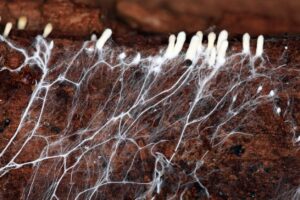
Beneath the forest floor lies a hidden world teeming with life, where microscopic fungi form symbiotic relationships with the roots of plants, exchanging nutrients in a delicate dance of mutual benefit. Known as mycorrhizal fungi, these organisms play a vital role in forest ecosystems, facilitating nutrient uptake for trees and promoting soil health. One such species is the “Arbuscular Mycorrhizal Fungus” (Glomus intraradices), which forms intricate networks within plant roots, increasing their access to water and minerals in exchange for sugars produced through photosynthesis. This useful symbiosis works to preserve the environment and contributes to the development of some of the farm’s vegetable and grain crops, you will surely learn more about it at various succulent exhibitions and other festivals with interesting and useful plants.
In addition to their ecological significance, mycorrhizal fungi also exhibit fascinating adaptations and interactions with their plant hosts. The “Orchid Mycorrhizal Fungi,” for example, form specialized relationships with orchid roots, enabling these delicate flowers to thrive in nutrient-poor soils. By studying these microscopic marvels, scientists hope to unlock the secrets of plant-fungal symbiosis and harness their potential for sustainable agriculture and ecosystem restoration. However, these relationships must be maintained in the right way in active production, so if you are engaged in floriculture, maintain your orchids and, if necessary, remove excess mycorrhizal leaves and roots as well as damaged and dead ends with pruning shears, which are as sharp as Japanese scissors so that the flower can properly develop into the earth.
Conclusion
In conclusion, the world of mushrooms is a diverse and endlessly fascinating realm, filled with bizarre species that continue to intrigue and inspire scientists and enthusiasts alike. From the alien-like fungi of the Amazon rainforest to the microscopic marvels beneath our feet, mushrooms play a crucial role in ecosystems around the globe. As we continue to explore and study these enigmatic organisms, we gain a deeper understanding of the interconnectedness of life on Earth and the importance of preserving biodiversity for future generations. So, let us embrace the weird and wonderful world of mushrooms and celebrate the beauty and complexity of nature in all its forms. Devote yourself to a deeper and more interesting exploration of this realm, and if you already spend a lot of time sitting at the computer, also devote yourself to acquiring adequate ergonomic equipment that will nurture your physiological posture and reduce pain.


